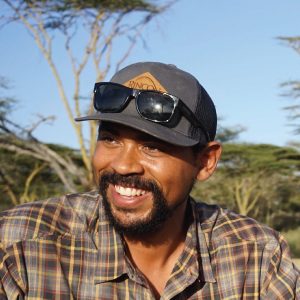
Jesse Smith was studying design when he was asked, how can you make something that gets better than age? Intrigued by the question of how to design stuff that won’t end up being thrown in the trash, he found his way to agricultural systems, cultured foods, and a community-based way of life. As director of stewardship at the White Buffalo Land Trust, which recently bought the Jalama Canyon Ranch near Santa Barbara, California, he is working with a team to bring back a degraded landscape using grazing animals, agroforestry, and healthy soil practices, and creating an agricultural, educational, and economic model for regenerative local food systems.
1’34 going from designing for planned obsolescence to designing things that get better with age
3’27 The White Buffalo name and story
5’40 Jalama Canyon Ranch was just bought, and will showcase regenerative ag, but it’s not in great shape right now
7’23 loss of soil and erosion
8’29 why it’s not enough to leave land alone to let it regenerate
9’44 regenerating a landscape is a place where we humans get to evolve
10’24 thinking ahead–short and long term
11’21 making decisions in context, including community and culture
12’36 the importance of livestock on the landscape
13’13 sheep mimicking the patterns of native herbivores
13’43 the different land uses for cows, goats, and sheep
14’30 using “management units”
15’27 working on perennial agriculture, specifically orchards
17’44 collecting scientific data–how, why, and with whom
18’26 collecting data for management
18’41 collecting data for story telling
19’22 collecting data for the ecosystem service marketplace
21’30 benefiting downstream neighbors
23’12 big data, including big ecological data, should be valuable to the land steward
24’01 reintegrating ourselves as human beings into nature
24’20 thinking of climate as both data to be collected, but also “climate of the mind”
25’15 changing the concept that humans are necessarily bad for this world
26’39 we can design our landscape to make human impact a net positive
27’33 everyone can take a stewardship role as we think about our own impacts
29’26 thinking about big questions of legacy more intensely after the birth of his daughter
30’47.6929 daughter loves that her parents are in agriculture
33’07 what’s the income model
33’30 enterprise approach to land regeneration
36’50 the price of regenerative agriculture
38’49 valuing all the things that should be part of a good food system
39’39 people don’t care because they don’t know
40’01 only 1% of food in the US is organic
41’26 the value of story telling about the food
43’58 “disrupting” the industrial food system with regenerative ag…but with care and consciousness
45’06 regeneration is inevitable because of our desire to survive
45’54 is the vision high tech or low tech or somewhere in between
47’43 we want to be living in a world with great food
48’38 what does success look like
49’48 human and ecosystem health
50’15 lessons learned from their organic cheese-making operation
51’24 cheese getting better the longer it sits there
52’18 fresh to aged is like annual to perennial
52’35 don’t want to be reliant on even refrigeration
53’01 Figure Ate foods: first product is persimmon vinegar



Subscribe:
Apple Podcasts
Spotify